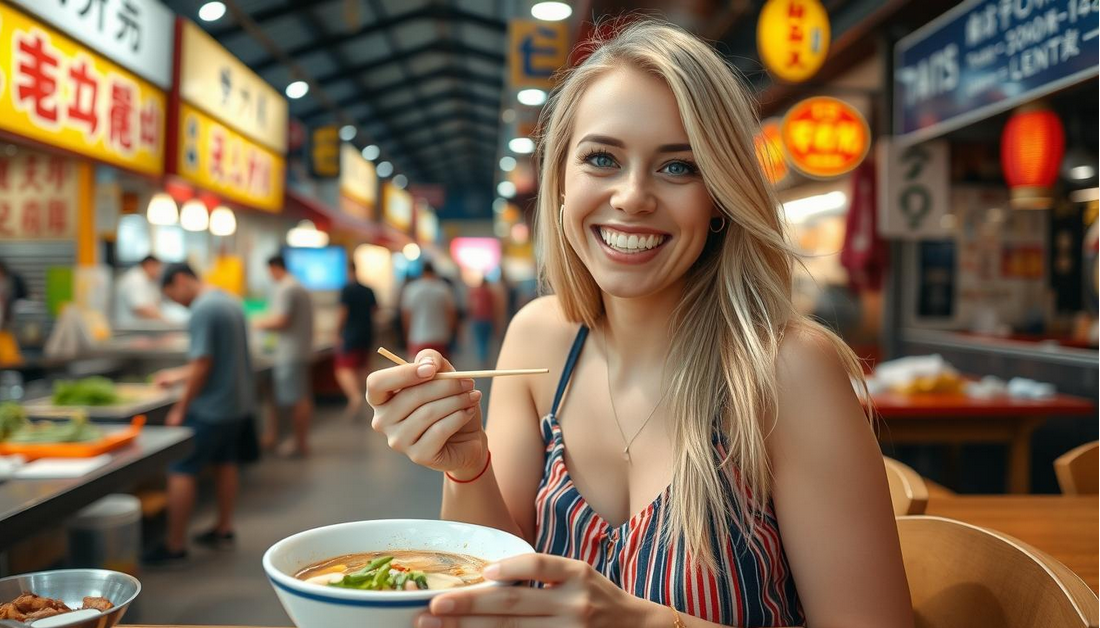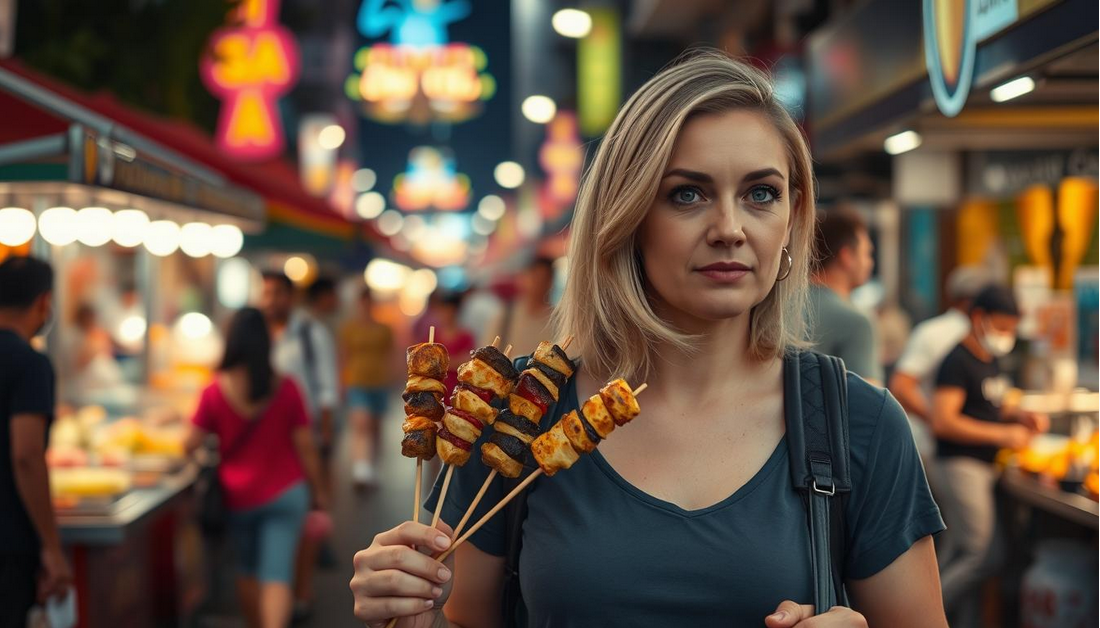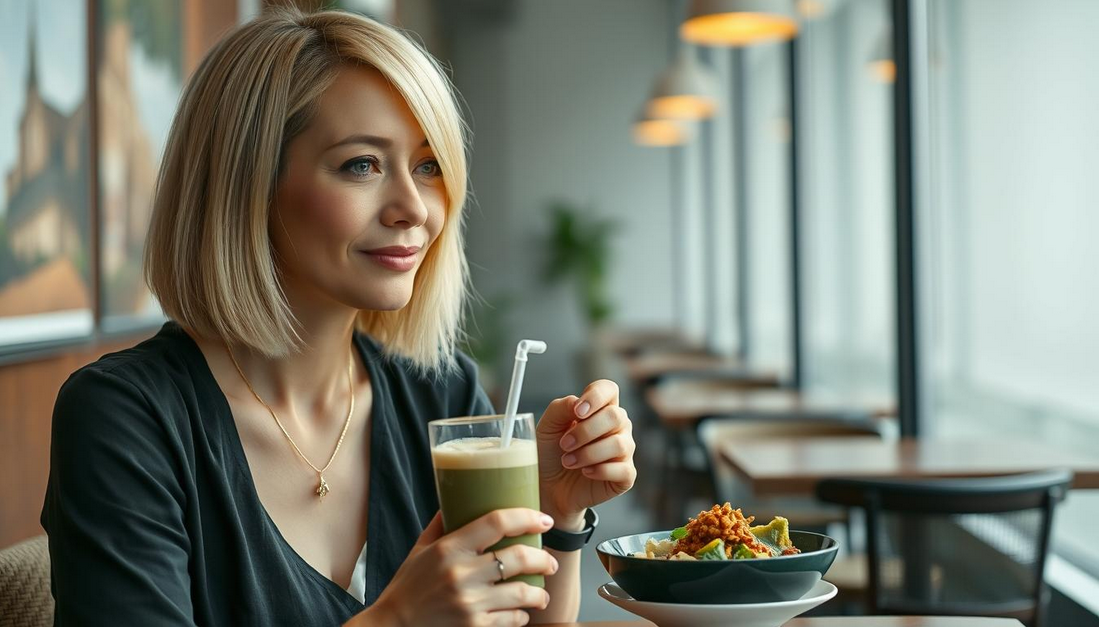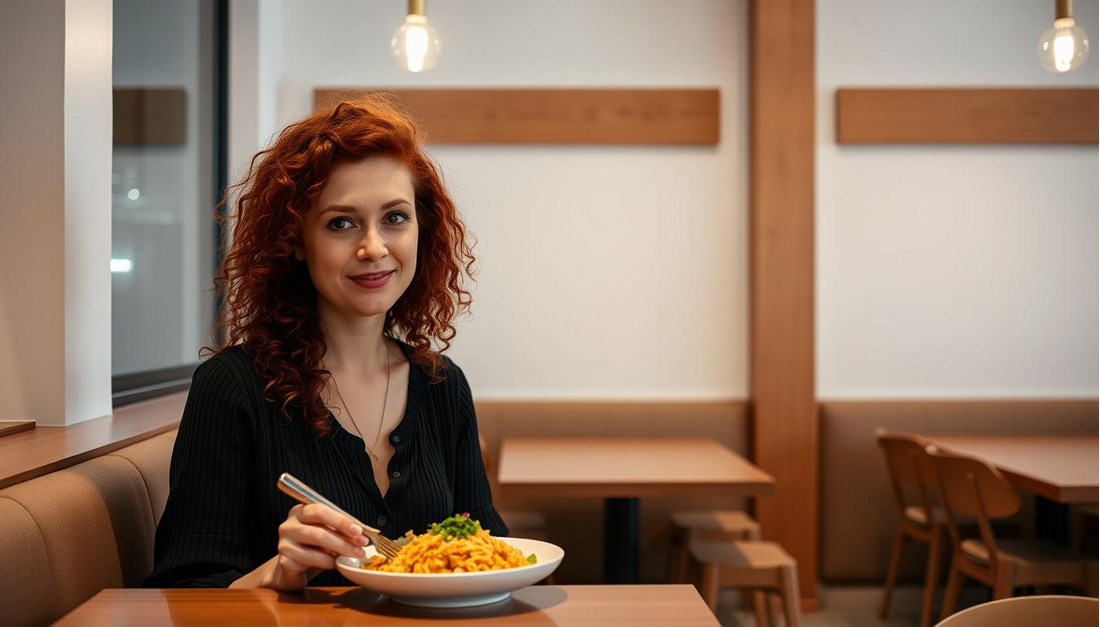India customers to view on amazon.in
What Are Singapore’s Most Popular Food Choices?
Singapore’s culinary scene is a vibrant reflection of its multicultural heritage, offering a diverse range of delicious dishes that cater to every palate and preference.
- Singapore’s Rich Culinary Heritage
- Hawker Centers: The Heart of Singapore’s Food Culture
- What Are Singapore’s Most Popular Food Choices?
- Hainanese Chicken Rice: Singapore’s National Dish
- Seafood Sensations: Chilli Crab and More
- Noodle Dishes That Define Singapore
- Laksa: The Spicy Coconut Noodle Soup
- Char Kway Teow: Stir-Fried Flat Noodles
- Hokkien Mee and Prawn Mee Variations
- Breakfast and Snack Options in Singapore
- Vegetarian and Vegan Delights in Singapore
- Cultural Significance of Food in Singapore
- Where to Find Authentic Singaporean Food in America
- Modern Food Trends in Singapore
- Conclusion: Embracing Singapore’s Food Paradise
- FAQ
- What are the must-try dishes in Singapore?
- What is the significance of hawker centers in Singapore’s food culture?
- Are there vegetarian and vegan options available in Singapore?
- What is the cultural significance of food in Singapore?
- Can I find authentic Singaporean food in the United States?
- What are some popular breakfast and snack options in Singapore?
- What are the modern food trends in Singapore?
- What is the best way to experience Singapore’s food culture?

The city-state’s food culture is a melting pot of Chinese, Malay, Indian, and Peranakan influences, resulting in a unique gastronomic experience. From street food to high-end restaurants, visitors can indulge in must-try dishes that showcase the country’s culinary diversity.
Some of the famous foods of singapore include a variety of flavors and textures, making it a paradise for food enthusiasts.
Key Takeaways
- Singapore’s food culture is a blend of different culinary influences.
- The city-state offers a range of delicious dishes, from street food to high-end cuisine.
- Visitors can try a variety of must-try dishes that showcase Singapore’s culinary diversity.
- Singapore’s famous foods are a reflection of its multicultural heritage.
- Food enthusiasts will find Singapore to be a culinary paradise.
Singapore’s Rich Culinary Heritage
Singapore’s food culture is a vibrant reflection of its multicultural heritage and geographical location. The city-state’s strategic position at the crossroads of Southeast Asia has made it a melting pot of culinary influences from around the world.
The Melting Pot of Flavors
Singapore’s cuisine is characterized by its diversity, with various ethnic groups contributing to its rich culinary tapestry. The blend of Chinese, Malay, Indian, and Peranakan cuisines has resulted in a unique flavor profile that is distinctly Singaporean.
Chinese, Malay, Indian, and Peranakan Influences
The culinary landscape of Singapore is shaped by the cooking traditions of its main ethnic groups. Chinese cuisine brings in a variety of flavors and techniques, while Malay cuisine contributes spicy and aromatic dishes. Indian cuisine adds a rich diversity of curries and breads, and Peranakan cuisine blends Chinese and Malay flavors, creating a unique culinary identity.
| Cuisine | Key Dishes | Characteristics |
|---|---|---|
| Chinese | Hainanese Chicken Rice, Bak Kut Teh | Variety of flavors, steaming and braising techniques |
| Malay | Nasi Lemak, Satay | Spicy, aromatic, use of coconut milk |
| Indian | Chicken Curry, Naan Bread | Rich curries, diverse use of spices |
| Peranakan | Laksa, Ayam Goreng | Blend of Chinese and Malay flavors, spicy and sour |
Historical Evolution of Singapore’s Food Scene
Singapore’s food culture has evolved significantly over the years, influenced by its history as a trading port and its multicultural population. The city-state’s culinary identity continues to adapt, incorporating new flavors and cooking techniques while maintaining its traditional roots.

Hawker Centers: The Heart of Singapore’s Food Culture
At the heart of Singapore’s vibrant food culture lies its hawker centers, bustling hubs that offer a diverse array of culinary delights. These centers are not just places to grab a quick meal; they are an integral part of Singapore’s identity, reflecting the nation’s multicultural heritage through its food.

What Makes Hawker Centers Special
Hawker centers are special because they provide a unique dining experience that blends traditional Singaporean cuisine with a lively atmosphere. Visitors can sample a wide variety of dishes, from Chili Crab to Hainanese Chicken Rice, all within a single center.
UNESCO Cultural Heritage Recognition
The significance of hawker centers in Singapore’s food culture has been recognized by UNESCO, which has designated them as a cultural heritage. This acknowledgment highlights the importance of these centers in preserving traditional cooking methods and culinary practices.
Famous Hawker Centers to Visit
Singapore is home to numerous iconic hawker centers that are a must-visit for any food enthusiast. Some of the most famous include:
- Maxwell Food Centre
- Lau Pa Sat
- Chinatown Complex
Maxwell Food Centre, Lau Pa Sat, and Chinatown Complex
These hawker centers are renowned for their diverse food offerings and vibrant atmosphere. Maxwell Food Centre is famous for its Hainanese Chicken Rice, while Lau Pa Sat is known for its Satay and other local delights. Chinatown Complex, on the other hand, offers a mix of traditional Chinese cuisine and other Singaporean favorites.
In conclusion, hawker centers are the backbone of Singapore’s food culture, offering a rich culinary experience that is both affordable and delicious. Whether you’re a local or a tourist, visiting these centers is a must to truly experience the essence of Singaporean cuisine.
What Are Singapore’s Most Popular Food Choices?
With its rich cultural background, Singapore has developed a distinctive food culture that attracts visitors worldwide. The city-state’s culinary landscape is characterized by a blend of traditional and modern flavors, resulting in a diverse array of dishes that cater to various tastes and preferences.

Overview of Must-Try Dishes
Singapore is famous for its street food and hawker centers, which offer a wide range of local specialties. Some of the must-try dishes include Hainanese chicken rice, chili crab, and laksa. These dishes are not only delicious but also reflect the country’s multicultural heritage. For instance, Hainanese chicken rice is a classic example of Singapore’s culinary identity, with its poached chicken served with fragrant rice cooked in chicken stock.
Other popular dishes include char kway teow, a stir-fried noodle dish cooked with prawns and vegetables, and Hokkien mee, a rich and savory noodle soup. These dishes are widely available at hawker centers and food courts, making it easy for visitors to sample the local cuisine.
Local Favorites vs. Tourist Favorites
While tourists often flock to try the famous chili crab and Hainanese chicken rice, locals have their own favorite dishes that may not be as well-known to visitors. For example, roti prata, a type of Indian flatbread, is a popular breakfast item among locals, often served with a side of curry. Tourists, on the other hand, tend to favor dishes that are heavily promoted in travel guides and food blogs.
Despite these differences, there is a common appreciation for the quality and flavor of Singapore’s street food. Whether you’re a local or a tourist, exploring the various food options in Singapore is an exciting culinary adventure that offers something for everyone.
Hainanese Chicken Rice: Singapore’s National Dish
Hainanese Chicken Rice is more than just a meal in Singapore; it’s a national pride. This dish, with its poached chicken, fragrant rice cooked in chicken stock, and spicy chili sauce, has become an integral part of Singapore’s culinary identity.

The Perfect Chicken Rice Components
The magic of Hainanese Chicken Rice lies in its components. The chicken is poached to perfection, resulting in tender and juicy meat. The rice is cooked in chicken stock, absorbing all the flavors. The accompaniments, including ginger paste, chili sauce, and dark soy sauce, add depth to the dish.
Poaching Techniques and Secret Recipes
The art of poaching the chicken involves precise temperature control to achieve the perfect tenderness. Chefs often guard their secret recipes, which include a blend of herbs and spices that infuse the chicken with flavor.
Where to Find the Best Chicken Rice
Singapore is home to numerous stalls and restaurants serving Hainanese Chicken Rice, but some stand out from the rest. The debate between Tian Tian and Wee Nam Kee, two of the most famous chicken rice stalls, continues to intrigue food enthusiasts.
Tian Tian vs. Wee Nam Kee Debate
Tian Tian, located in Maxwell Food Centre, is known for its flavorful chicken and generous portions of chili sauce. Wee Nam Kee, on the other hand, has gained a Michelin star for its consistently high-quality chicken rice. Both stalls have their loyal followers, making the choice between them a matter of personal preference.
Seafood Sensations: Chilli Crab and More
Singapore’s seafood scene is a culinary journey like no other, with chilli crab being the star attraction. This beloved dish has become an integral part of Singaporean cuisine, drawing visitors from around the world who are eager to taste its unique flavors.

The Story Behind Chilli Crab
Chilli crab is more than just a popular seafood dish in Singapore; it’s a culinary icon that has a rich history. The dish is believed to have originated in the 1950s or 1960s, created by a group of fishermen’s wives who cooked crabs in a tomato-based sauce. Over time, the recipe evolved, incorporating elements like chilli and various spices to create the distinctive flavor profile that Singaporeans and visitors love today.
How to Eat Chilli Crab Like a Local
Eating chilli crab can be a messy affair, but that’s all part of the fun. To enjoy it like a local, start by cracking the crab shell and extracting the meat. Then, dip the crab meat into the savory chilli sauce. Don’t be afraid to get your hands dirty – it’s all part of the experience. Here are some tips:
- Use your hands or a pair of crab crackers to break the crab into manageable pieces.
- Dip the crab meat into the chilli sauce to coat it evenly.
- Enjoy with steamed buns or rice to soak up the flavorful sauce.
Other Popular Seafood Dishes
While chilli crab is undoubtedly a star of the Singaporean seafood scene, it’s not the only delicious option available. Other popular dishes include black pepper crab and cereal prawns, each offering a unique twist on seafood cuisine.
Black Pepper Crab and Cereal Prawns
For those looking for a change of pace from chilli crab, black pepper crab is a great alternative. This dish features crab cooked in a savory black pepper sauce, offering a flavorful contrast to the spicy chilli crab. Cereal prawns, on the other hand, are prawns coated in a crunchy cereal mixture, often served with a side of vegetables. Both dishes showcase the diversity of Singapore’s seafood offerings.
Noodle Dishes That Define Singapore
The noodle scene in Singapore is a melting pot of flavors and textures, offering a diverse range of dishes that cater to different tastes and preferences. From spicy noodle soups to stir-fried noodle delights, Singapore’s noodle dishes are a reflection of its multicultural heritage.

Laksa: The Spicy Coconut Noodle Soup
Laksa is a popular noodle soup made with a rich, spicy coconut milk broth, served with ingredients like shrimp, chicken, or tofu. The broth is flavored with a blend of spices, including galangal, lemongrass, and chili peppers, giving it a distinctive taste.
Char Kway Teow: Stir-Fried Flat Noodles
Char Kway Teow is a stir-fried noodle dish made with flat rice noodles, prawns, pork, vegetables, and soy sauce. It’s cooked over high heat, giving the noodles a slightly charred flavor that is characteristic of this dish.
Hokkien Mee and Prawn Mee Variations
Hokkien Mee and Prawn Mee are other beloved noodle dishes in Singapore. Hokkien Mee is a fusion of different noodle types, often served in a savory broth or stir-fried. Prawn Mee, on the other hand, is a noodle soup made with a prawn-based broth, served with prawns, pork, and sometimes egg.
Breakfast and Snack Options in Singapore
From traditional kaya toast to an array of street snacks, Singapore offers a diverse breakfast and snack culture. The city-state’s breakfast scene is a reflection of its multicultural heritage, with various ethnic groups contributing to the array of dishes available.
Kaya Toast and Soft-Boiled Eggs
A classic Singaporean breakfast consists of kaya toast, a sweet spread made from coconut milk and pandan leaves, served with soft-boiled eggs and a cup of coffee. This simple yet satisfying meal is a staple in many Singaporean households.
Traditional Kopitiam Experience
The traditional kopitiam experience is an integral part of Singapore’s breakfast culture. These coffee shops offer a nostalgic atmosphere, with the aroma of freshly brewed coffee and the sound of sizzling toast filling the air. Visitors can enjoy their kaya toast and soft-boiled eggs in a lively, local setting.

Popular Street Snacks
Singapore’s street snack scene is just as vibrant, with popular items like satay, popiah, and curry puffs. These snacks are not only delicious but also reflect the city-state’s multicultural influences.
Satay, Popiah, and Curry Puffs
Satay, grilled meat skewers, are a favorite among locals and tourists alike. Popiah, a thin, crepe-like wrap filled with vegetables and sometimes shrimp, is another popular snack. Curry puffs, flaky pastry pockets filled with a spicy curry filling, are a satisfying treat.
Vegetarian and Vegan Delights in Singapore
Vegetarian and vegan cuisine is thriving in Singapore, with a variety of traditional and modern dishes to try. The city-state’s multicultural heritage has contributed to a diverse range of plant-based options, catering to different tastes and dietary preferences. Whether you’re a local or a visitor, exploring Singapore’s vegetarian and vegan delights is a culinary adventure worth experiencing.

Traditional Vegetarian Dishes
Singapore’s traditional vegetarian dishes are a reflection of its cultural diversity. One of the standout dishes is Chap Chye, a stir-fried vegetable medley that is both flavorful and nutritious.
Chap Chye and Vegetarian Yong Tau Foo
Chap Chye is typically cooked with a variety of vegetables, sometimes including mushrooms and tofu, in a savory sauce. Another popular dish is Vegetarian Yong Tau Foo, where tofu and vegetables are stuffed with a tofu paste, then served in a light broth or with a dipping sauce. These dishes showcase the creativity and flavor of Singapore’s vegetarian cuisine.
Vegetarian Versions of Classic Singaporean Dishes
Many of Singapore’s beloved dishes have vegetarian versions, making it easy for plant-based eaters to enjoy local flavors. A notable example is Vegetarian Laksa, a spicy noodle soup that substitutes fish or meat with tofu or other plant-based ingredients.
Vegetarian Laksa and Meat-Free Satay
Vegetarian Laksa is a flavorful and aromatic dish that retains the essence of the original while catering to vegetarian diets. Another popular option is Meat-Free Satay, made with marinated tofu or tempeh, grilled to perfection. These dishes demonstrate the versatility of Singapore’s food scene in accommodating different dietary needs.
Singapore’s vegetarian and vegan scene is not just about adapting traditional dishes; it’s also about innovation and creativity in plant-based cuisine. With a growing number of vegetarian and vegan restaurants and stalls, there’s never been a better time to explore the diverse world of plant-based eating in Singapore.
Cultural Significance of Food in Singapore
In Singapore, the significance of food goes beyond mere sustenance, embodying the country’s diverse cultural fabric. Food is a universal language that bridges cultural divides, fostering community and social bonding.
Food as a National Identity
Food plays a crucial role in defining Singapore’s national identity. Dishes like Hainanese chicken rice and chili crab are not just popular meals; they are symbols of the nation’s multicultural heritage. These dishes reflect the historical influences of various ethnic groups, including Chinese, Malays, and Indians, showcasing the country’s rich cultural diversity.
Dining Etiquette and Food Customs
Understanding dining etiquette and food customs is essential to appreciating Singapore’s food culture. For instance, when dining at a hawker center, it’s common to share tables with strangers, promoting a sense of community. The use of chopsticks, forks, and knives varies across different ethnic cuisines, with some dishes traditionally eaten with the hands.
| Dining Etiquette | Customs |
|---|---|
| Sharing tables at hawker centers | Fosters community bonding |
| Using utensils appropriately | Respects cultural traditions |
Where to Find Authentic Singaporean Food in America
You don’t have to travel to Singapore to enjoy its cuisine; many American cities have authentic Singaporean restaurants. For those craving the flavors of Singapore, there are several options available across the US.
Singaporean Restaurants in Major US Cities
Major cities like New York, Los Angeles, and San Francisco have seen a rise in Singaporean eateries. Notable restaurants include those in Manhattan’s Chinatown and the hawker centers-inspired food halls in California. These establishments offer a range of traditional dishes, from Hainanese chicken rice to chilli crab.
Recreating Singaporean Flavors at Home
For those who prefer cooking at home, recreating Singaporean dishes is easier than ever. With the availability of Southeast Asian ingredients in many US supermarkets, you can try your hand at making Laksa or Char Kway Teow. Online recipes and cooking tutorials provide step-by-step guidance to help you achieve authentic flavors.
As celebrity chef
“Anthony Bourdain once said, ‘Your body is not a temple, it’s an amusement park. Enjoy the ride.’”
Trying Singaporean cuisine is a culinary adventure worth enjoying, whether dining out or cooking at home.
Modern Food Trends in Singapore
Singapore’s culinary landscape is undergoing a significant transformation, driven by modern food trends. The city-state’s food scene is becoming increasingly sophisticated, with a blend of traditional and contemporary flavors.
Fusion Cuisine and Michelin-Starred Establishments
The rise of fusion cuisine is a notable trend, with chefs combining traditional Singaporean flavors with international ingredients and techniques. This has led to the creation of unique dishes that are both innovative and rooted in local heritage. Additionally, Michelin-starred restaurants are setting new standards in the culinary scene, offering exquisite dining experiences that attract food enthusiasts from around the world.
International Influences on Local Food
International influences are also shaping the local food landscape in Singapore. Global flavors and ingredients are being incorporated into traditional Singaporean cuisine, resulting in a diverse and vibrant food culture. From Korean-Mexican fusion to modern interpretations of classic dishes, the blending of culinary traditions is creating a truly cosmopolitan dining experience.
Conclusion: Embracing Singapore’s Food Paradise
Singapore’s food scene is a vibrant reflection of the country’s multicultural heritage and cultural identity. From the savory flavors of hawker centers to the innovative creations of modern restaurants, Singapore’s culinary delights offer a wealth of exciting experiences for food enthusiasts.
As we explored the diverse world of Singaporean cuisine, it becomes clear that embracing singaporean cuisine is about more than just trying new dishes – it’s about immersing oneself in the rich cultural heritage that defines this singapore food paradise. Whether you’re savoring the spicy kick of chilli crab or indulging in the comforting warmth of Hainanese chicken rice, each bite is a testament to the island’s singapore culinary delights.
For those inspired to continue their culinary journey, Singapore’s food paradise awaits, full of flavors and experiences that blend tradition with innovation. By embracing the diversity and richness of Singaporean cuisine, food lovers can enjoy a truly unique gastronomic adventure that leaves a lasting impression.







